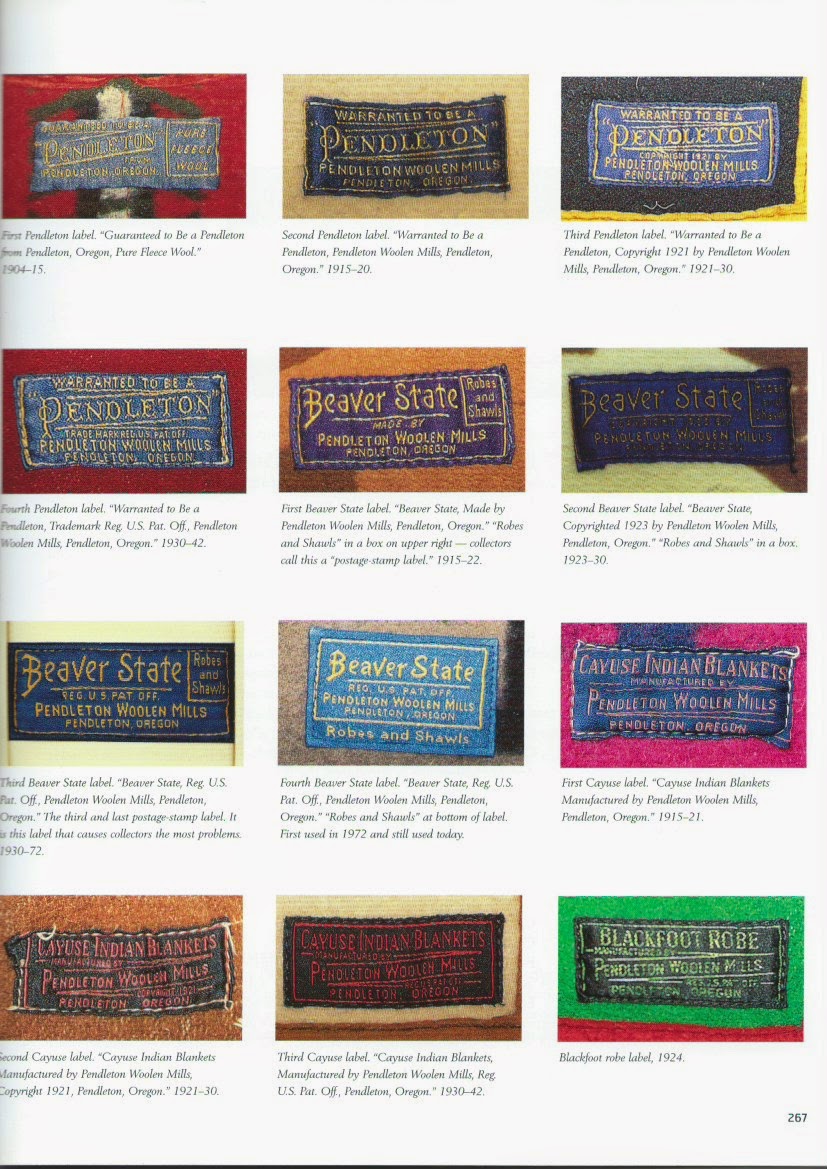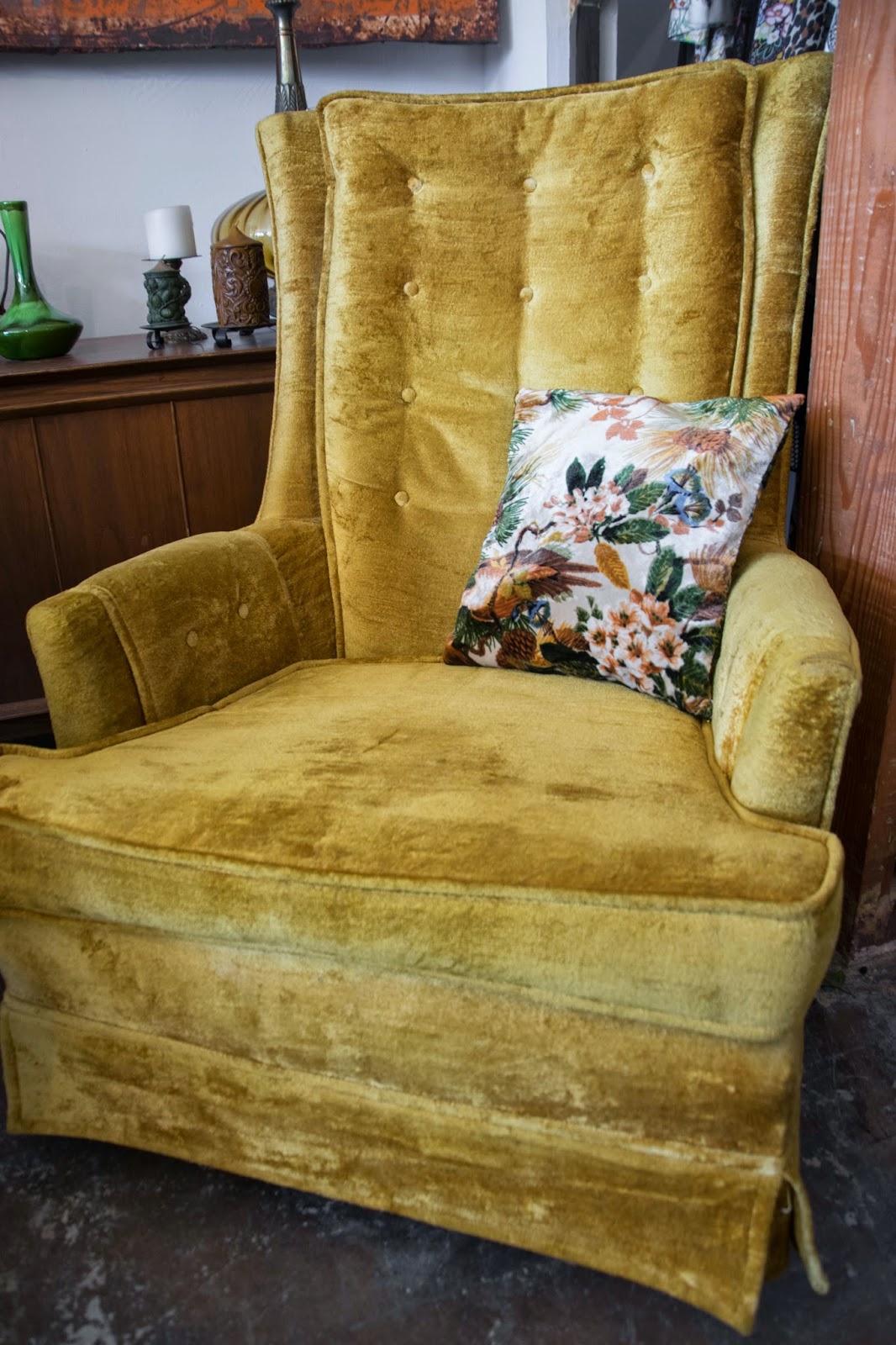“We have lost much of the past in this country ,and tradition is no longer an easily found commodity, but tradition is alive and well at Pendleton. A pioneer Oregon family continues to manufacture the blankets their ancestors produced specifically for sale to American Indian men and women. A Navajo woman still dances to ancient rhythms in her Pendleton shawl. A Zuni family still bury a loved one in a jet black Pendleton robe. The tide of history washed away the last of its competitors many, many years ago. Pendleton alone remains.”
-Barry Friedman
 |
| All photos are from Friedman's Chasing Rainbows |
“Life if perfect with a Pendleton!” is Sharpie-inscribed above Barry Friedman’s signature inside a copy of his book, Chasing Rainbows: Collecting American Indian Trade & Camp Blankets. If you have spent any amount of time scouring fleas and thrift stores for items made by this coveted brand, the moment you happen upon one, life does feel pretty perfect. And from decades of collecting these woolen wonders, he knows the feeling well. Though Pendleton’s name carries weight for many of us—sparking notions of bright, geometric patterns concomitant with Native American traditions—their inherent value goes much deeper than current trends and tastes. The tale of Indian trade blankets weaves together the white man and indigenous tribes into a symbiotic relationship after the Indian Wars that carries on through today. If you’re looking for a truly vintage Pendleton, and need a good lens to filter see through the loads and piles of blankets, read on before your next shopping trip.
The Indian Wars results forced independent Native American tribes onto undesirable reservation lands, at the mercy of government aid. Having penned free, nomadic spirits in foreign land, the Native American way of life would be forever changed. Around 1890 Traders settled on reservations, selling trinkets and wares of the West to white consumers as they traveled through, except for the Indian trade blankets, these were made exclusively for the Native American consumer, who used them for dress, sleep, burial robes, etc. At this same time, the Navajo began weaving rugs to sell to traders. So Anglo made blankets designed for Indians’ use and Indian made rugs designed for Anglo homes flooded trading posts and woolen mills manufacturing trade blankets began to sprout.
There were many competing companies with their own distinctive patterns and weave from 1890-1942, but Pendleton Woolen Mills outlasted them all as the only surviving manufacturer of Indian trade blankets, and made more than all the other mills combined. The company got their start in 1896, and more than one hundred years later, we still want one. With a deluge of their blankets, robes and couch covers out on the market, developing a collector’s eye takes talent and work. We are here to get you started. Though this post is hardly comprehensive in it’s overview of how to spot a highly valuable blanket, it will get you shopping more keenly and understanding more clearly what a truly vintage Pendelton is (for more detailed information, check out Barry’s incredible book, Chasing Rainbows, to start—an enjoyable and fascinating read).
The first blankets turned out by Pendleton Woolen Mills had rounded corners and stopped being produced in 1908—if you find one of these, “Eureka!”, you’ve struck gold. These are the most valuable Pendletons. A word of caution, though, Knight Woolen Mills also made round corner blankets, and a Pendleton from 1896-1904 will most likely bear no label (few survived as they were made of cardboard). Find one with a cloth label reading “Gauranteed to be a Pendleton-Pine Fleece Wool,” you can rest assure that blanket was made between 1904-1908, and you should give Barry Friedman a call.
Joseph Rawnsey began working for Pendleton under an ownership change in 1901, and remained their cornerstone designer until his death in 1929. His ability and talent being unsurpassed, blankets made during these years are highly coveted (next only to the round corner blankets): specifically the spectacular, vibrant-colored patterns from the 1911 sales catalog—Pendleton’s first full color catalog. Two of his designs, the Harding and the Chief Joseph patterns still remain in Pendleton lines to this day.
Pendleton Woolen Mills lived up to their slogan, “Where quality decides we always win,” making their blankets from virgin wool and processing the wool with house made soaps. For a few years they wove for the Cayuse Blanket Company in the 1920’s, making a more inexpensive version with cotton warp and 17% reprocessed wool.
Fringe or no fringe: shawls are the fringed blankets intended for women and blankets sans fringe were made for men and called robes. Neither one is more or less valuable than the other, but a couch cover will trump both. Color schemes can hype value, too, with bold primary colors—black and red being tops—as the most desirable.
 |
| Pendleton couch cover |
Pendleton trade blankets come in eight different design categories, according to Friedman, in order of most desirable to collectors:
Overall: a repeating pattern fills entire the entire surface of the blanket—this is generally the ‘busiest’ sort of pattern.
Banded: In banded blankets, patter is confined within…duh…bands. Areas of solid color separate the bands from one another.
Center Point: features either an individual design element—usually a cross, star, or diamond—in the middle of the blanket that dominates the pattern or a series of the same dominating elements in a horizontal or vertical band across the blankets center.
Six-Element: features two identical large elements reported in three rows.
Nine-Element: features three identical large elements reported in three rows.
Framed: a single large design element in the center of the blanket is surrounded by solid color. An intersecting design running the length of all four side ore h blanket forms a ‘frame’ for the central element. These are exclusive to Pendleton.
Striped: are just that—stripes and nothing else. Every manufacturer made striped patterns, which have always been a great favorite of all the tribes.
Pictorial: features…yes, that’s right…pictures!
Conditions to be aware of which devalue blankets are shrinkage and pilling. If a blanket is less than five by six feet or if the edges pucker when lain flat, it’s been shrunk. Other marks of wear may add to the value for some collectors, and are referred to as relic condition, while other prefer a blanket in ‘like new’, or mint, condition.
Labels can give you a good indication of when the blanket was made. Familiarize yourself with the evolution of labels below, to give you a good indication of when a blanket was woven.
Here is a quick timeline of dates to help place blankets and determine value:
1896-1901: round corner blankets made on dobby looms with only straight line patterns
1901: Jacquard looms replace dobby looms, allowing for increased intricacy and designs with curvilinear patterns; first Pendleton shawl made
1902: bales of twenty assorted robes sell for eighty dollars
1904-1908: round corner blankets with cloth labels
1908-1909: Pendleton Woolen Mills falls into financial difficulty and mill idles until bought by Bishop family (who still owns it today!)
1901-1929: Joe Rawnsey designs for Pendleton Woolen Mills
1910: Tepee patterned blankets hit the market
1911: Pendleton’s most elaborate catalog issued
1924-1929: Cayuse blankets manufactured
1926: Harding pattern coined
1929: Stock market crashes
1930: Chief Joseph pattern coined; patterns become larger designs with diamond, cross and star motifs, using sunset colors of browns and oranges.
1942: all woolen mills converted to war efforts and marks the end of the Indian trade blanket manufacturing era. Any blanket dated prior to this year is of high value!
Ultimately, finding the perfect Pendleton comes down to what you enjoy, this is the most important value to consider. Whether you collect Pendleton’s as a hobby or just love a good wool blanket as the Winter chill sets in, know that wherever you see one, Native Americans are still using them right alongside you—and may we all find some warmth in kinship through our mutual love of these spectacularly woven trade blankets.
























































